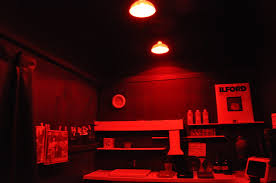x-ray darkroom
introduction
xray film is very sensitive to light and radiation. So these xray films are processed in a darkened room [darkroom]. The reason for poor xray is the wrong technique adopted in the darkroom and not the bad exposure or radiograph technique.
position of darkroom
To reduce the time taken for expose and unexpose xray films to be moved between the radiography room and the darkroom, the darkroom should be located in the center of the radiology department. Should be the same.
size and developement
The darkroom should be very large and the land should be 100 square feet and height 11. So that all equipment can be kept without crowding. The loading batch and processing tank are the main ones in these devices. Which is called the wet and dry side of the darkroom. And it is very important to have a proper distance between them. Therefore, loading batches and processing tanks should be in opposite corners of the darkroom.
darkroom layout
The following requirements are required for the construction of a dark room to perform quality work in a protective manner.
1.radiation protection
To prevent radiation, the walls of the dark room should be made of 9 inch thick concrete or the walls of the dark room should be covered with a layer of lead which should be 1.5 mm in thickness. Being in close proximity to the radiography room, it is very important for the dark room to be protected from radiation.
2. floor
The floor of the dark room should be easily cleaned so that the spots of the developer fixer should not be frozen on the floor, ie, protected from the effects of chemicals. Also the floor / floor should not be slippery, so the ceramic tiles should be used for flooring in the darkroom.
3 .wall (dark room wall)
The walls of the dark room do not have to be black in color, but choose the color given that it can reflect the maximum amount of safe light. Also, there should be an anti-chemical layer on the walls of the dark room so that the chemical does not have any effect on the wall. . Like -Varnish
4.vantilation of darkroom
Do not normally install windows in the dark room because this brings the light inside the dark room, so you can use ac for ventilation and can also install fans.
5. electrical wire
The dark room floor is sometimes wet due to the developer fixer and water etc. in the dark room. The radiographer's hands are also wet during the work, which is likely to cause a current, so the electrical wires must be safely under-ground so that the radiographer is least likely to be electrocuted.
6. door (dark room door)
The door of the dark room should be in such a way that light cannot enter the dark room and the door should be arranged in such a way that it can be closed only from inside otherwise the staff will open the door of the dark room repeatedly from outside. But there is a possibility of reaching light and radiation in the dark room. Nowadays interest revolving doors are used maximum in the dark room, it occupies very less space and is more secure from the point of view of radiation and light.
7. pass box
The pass box in the darkroom is the location whereby the exposure cassette from the radiographic room is sent to the dark room and the unexpose films from the dark room are transported to the radiographic room. The passbox should be near the loading batch so that the working radiographer Do not be too much discomfort.
The pass box consists of two doors made of lead metal, in which one part contains expose films and the other part consists of un-exposed films. Due to the wall ledge of the pass box, its doors are light and radiation resistant and these doors are arranged in such a way that both cannot be opened simultaneously. They have an interlock system. If both the doors are opened at one time, then there is a possibility of lighting and radiation on the films.
Darkrook occupies a very important position in the radiology department. After exposure of xray films in the radiology department, the manual processing is done in a dark room called a darkroom. In the darkroom, there is a safe light to work rather than complete darkness. After xray exposure, darkroom is required to convert the latent image of exposure films into a visible image.
